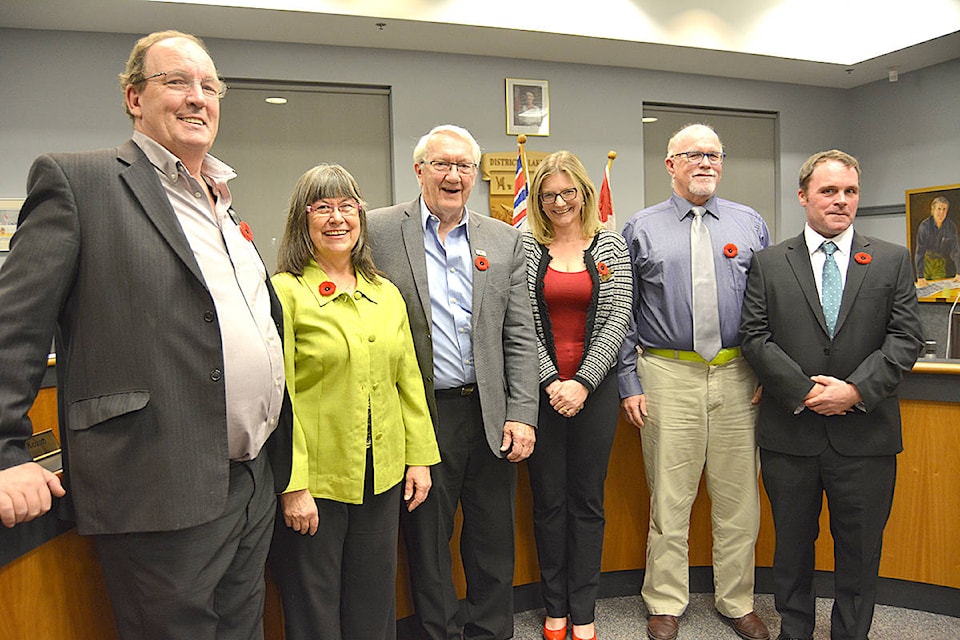Water rate increases
Lake Country council will decide on whether increase water consumption charges for its residential, multi-family residential, commercial, and seasonal irrigation customers from $0.60 dollars per cubic metre to $0.78 per cubic m, as per the request of the Water Services Advisory Committee, at a later date.
Kiel Wilkie, engineering technician gave the advisory committee a water consumption update at the last committee meeting, Nov. 16, according to a report which was presented during the council meeting.
The report highlights that water demands this year are the lowest on record with the largest change reflected in agricultural consumption.
The largest user is the agriculture sector at 57 per cent, residential use 17 per cent, multi‐family 3 per cent, commercial 3 per cent, seasonal irrigation 2 per cent and unaccounted usage at 17per cent, according to the report.
Wilkie also highlighted that the primary factor driving rate increases are increasing construction prices, in the report.
“Increase of water rates ensure adequate funding is received to fund daily water operation, capital improvements, and capital renewal projects,” the report said. “An in‐depth study was done by staff and a 2.2 per cent increase in costs for operation is required.”
Visitor Centre focuses on Okanagan Rail Trail
For the 2018 season, the Lake Country Visitor Centres: in Oyama, at the Kangaroo Creek Farm and a mobile unit, saw around 17,057 visitors. Last year saw 12,248.
Visitors were primarily from the Okanagan and Europe, according to a report which was presented at Tuesday’s council meeting and had fewer visitors from other parts of Canada, excluding Alberta, this year than last year, with 273 in 2017 and 192 in 2018.
The visitor centre aims to utilize the Okanagan Rail Trail. “Lake Country has the largest opportunity to capitalize on the Okanagan Valley Rail Trail. Even before the official opening in September 2018, the number of Users of OVRT was impressive. Visitors continue to use the Trail daily, into October, when traditional seasonal visitors, are no longer in our area,” according to the report.
Alan Gatzke, president of Tourism Lake Country, suggested focusing on the rail trail, and building tourism opportunities around it, during Tuesday’s council meeting.
The report recommends marketing the rail trail as well as Lake Country specific visitor information during emergencies.
It also noted that fires and flooding in the area has an impact on stakeholders. There is also no emergency plans in place for visitors at a regional or provincial level.
READ MORE: Lake Country tourism centre calls for better emergency plan
Building bylaw update
Lake Country council agreed to give first reading to an updated building regulation bylaw Tuesday night, which if approved, will allow the district to fall in line with the province’s new energy step code. The code aims to have all new homes to have net zero energy by 2032.
Staff recommend the district review the building bylaw every five years, to ensure it reflects current BC Building Code regulations, according to a report which was presented to council Tuesday night.
Wildfire mitigation grants approved
Council gave its approval to two grants that will help mitigate wildfire risk in the community and protect its watershed.
Lake Country is applying for up to $100,000 from the Community Resiliency Investment program, which is a new provincial program intended to reduce the risk of wildfires in communities across B.C., according to a report which was presented to council Tuesday night.
The district is also seeking another grant worth $20,000 from Forest Enhancement Society of British Columbia in order to focus on wildfire risk reduction in the Beaver Lake and Oyama Lake Watersheds.
READ MORE: District going after wildfire mitigation grant
Coun. Todd McKenzie said $20,000 will go towards a study to determine the most at-risk areas in the district.
@carliberry_
carli.berry@kelownacapnews.com
Like us on Facebook and follow us on Twitter.
